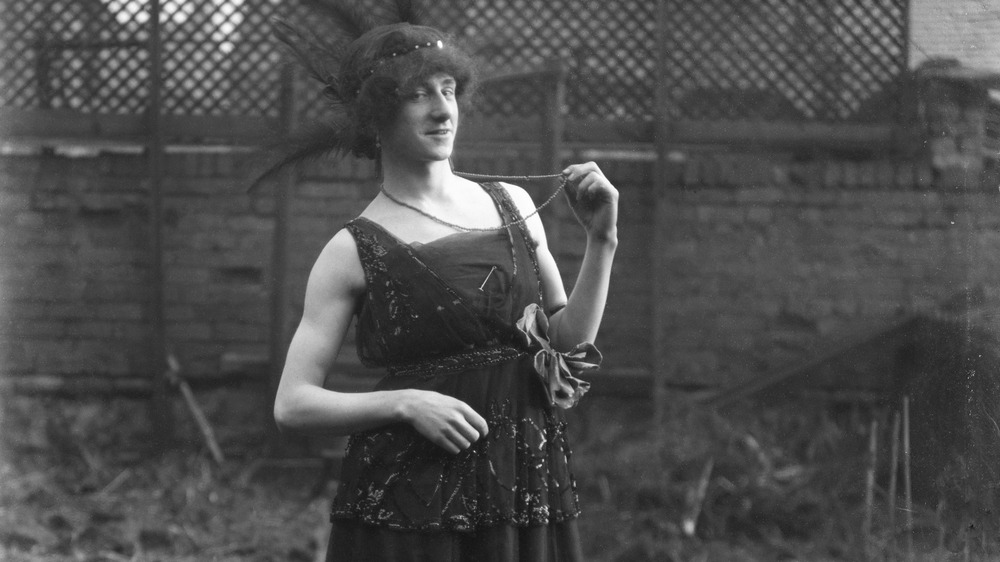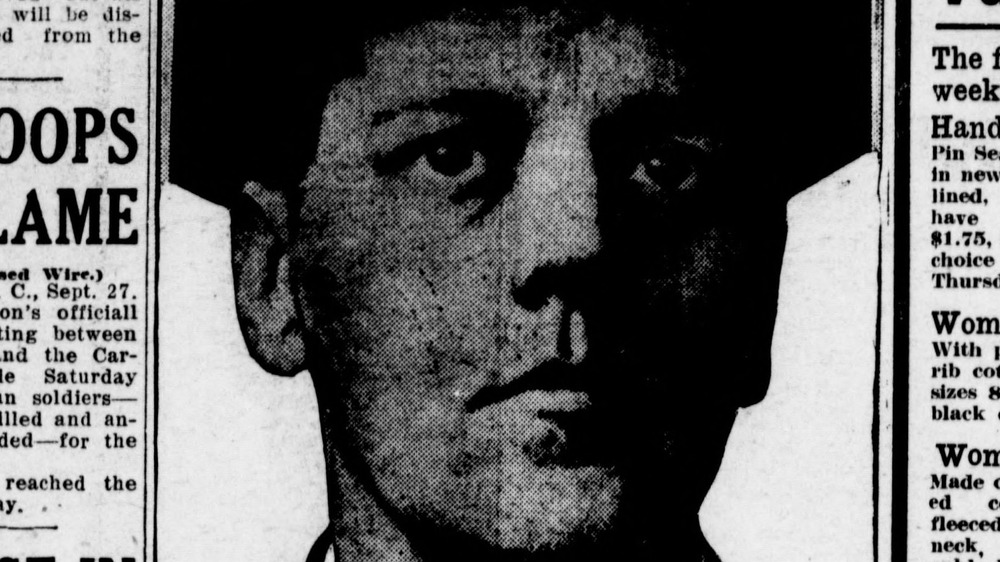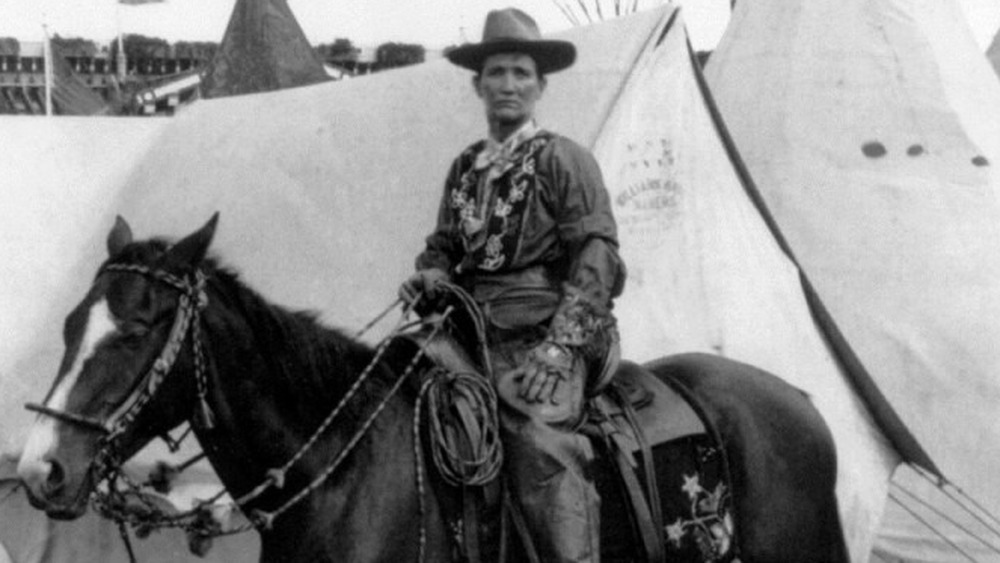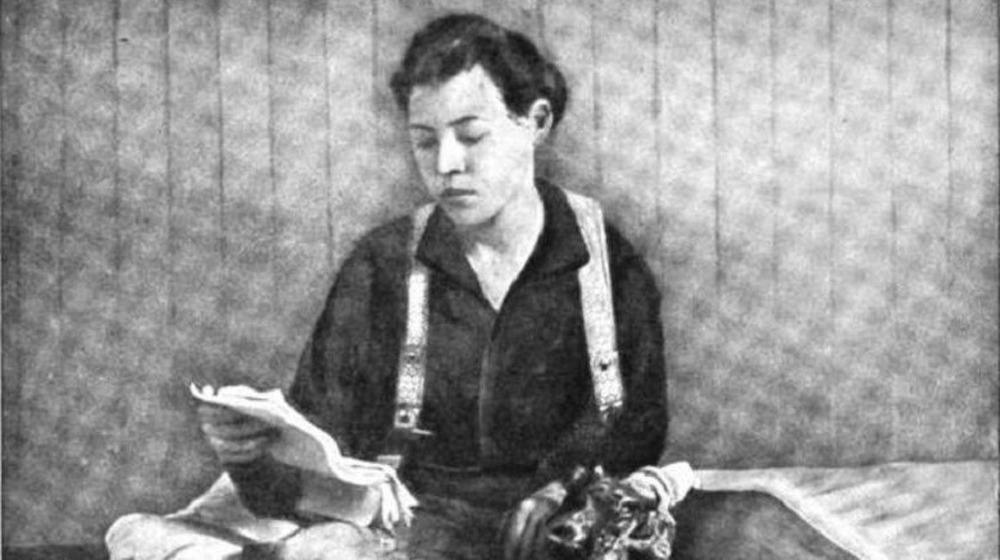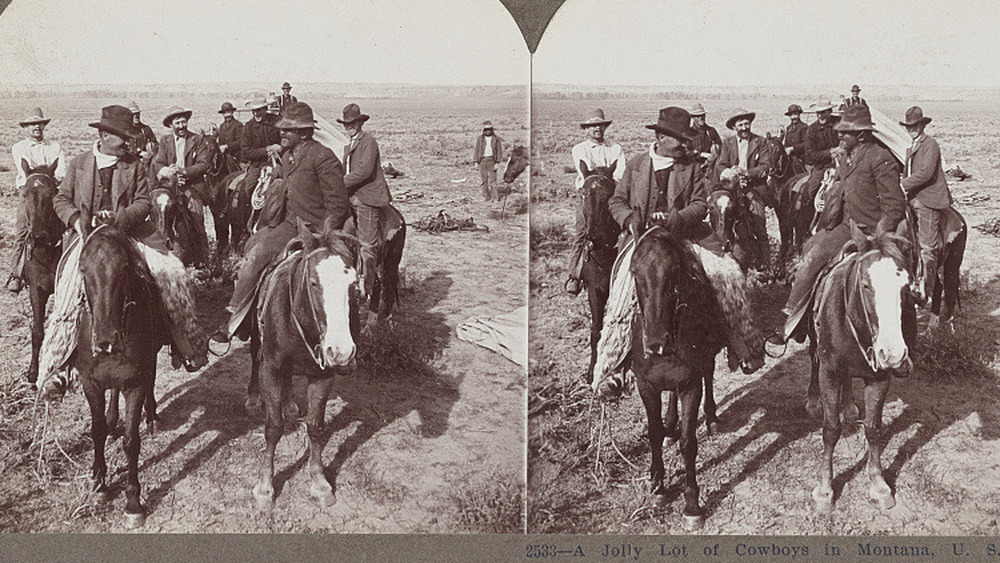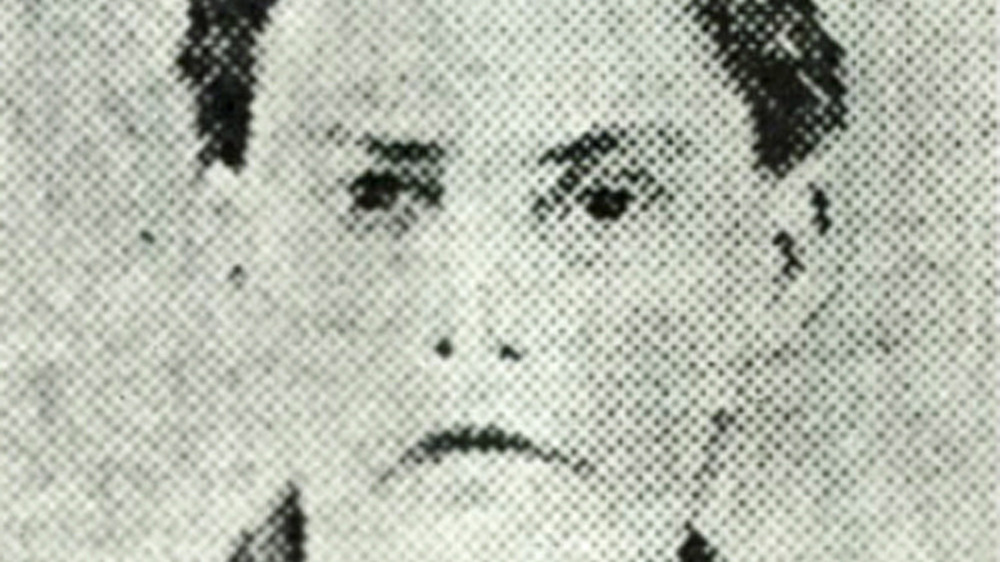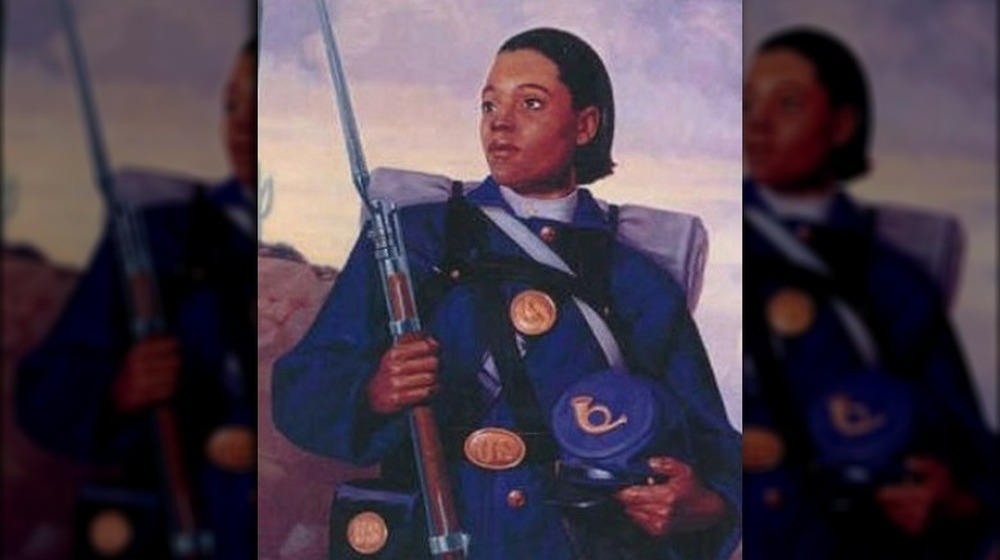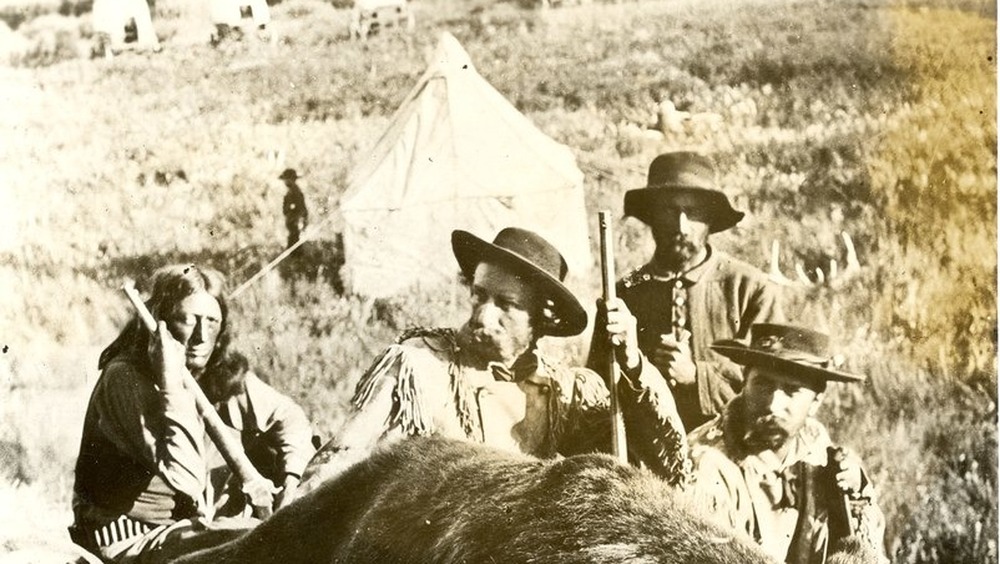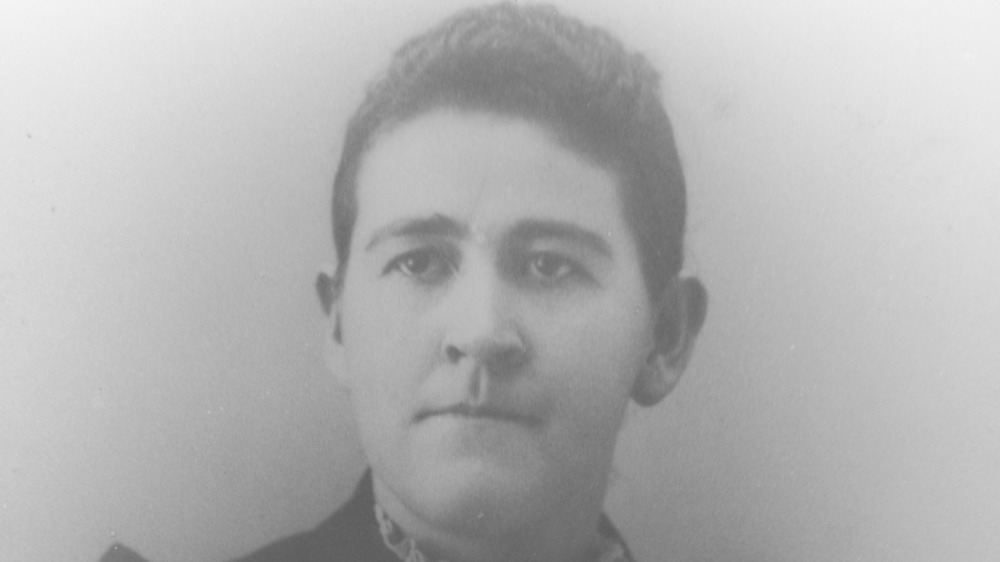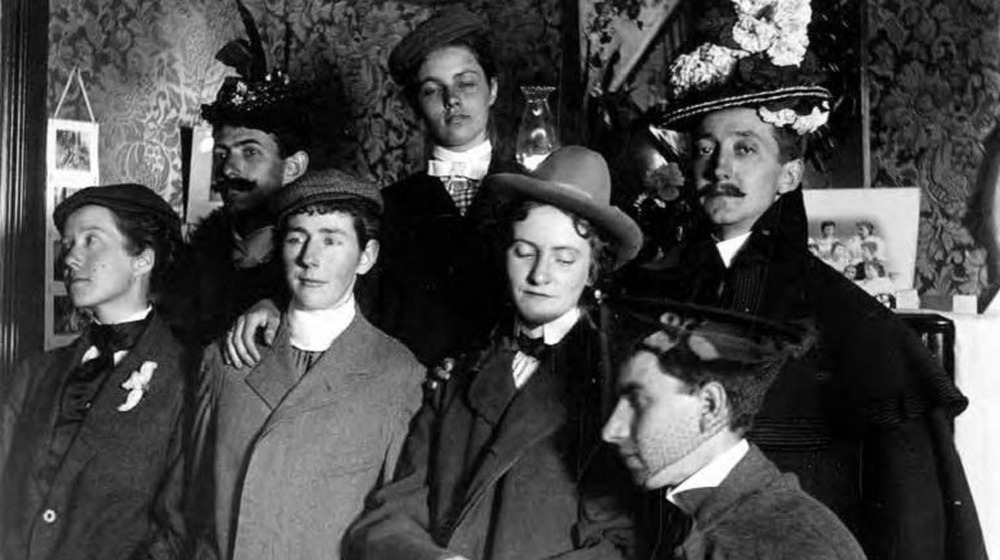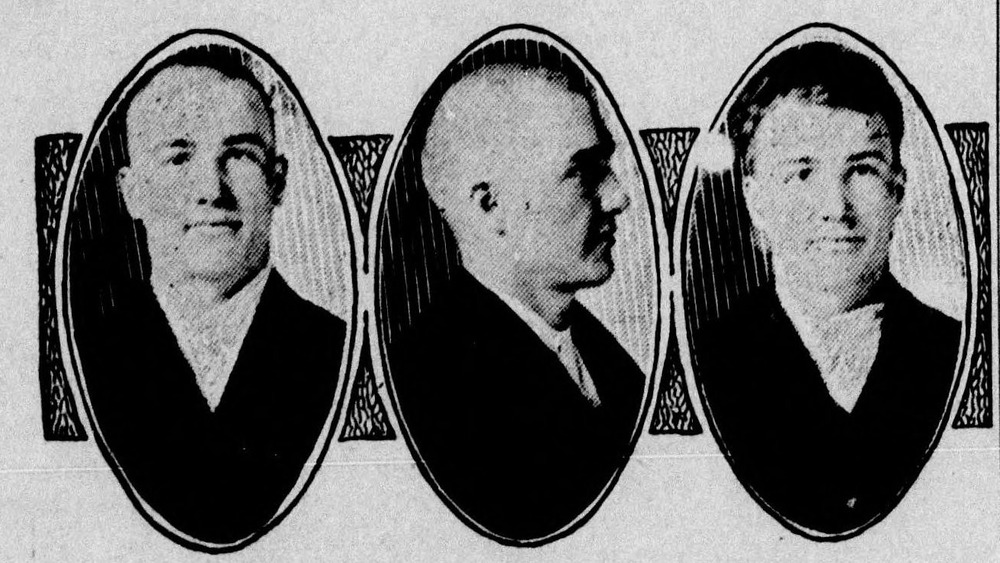Untold Tales Of Gender-Nonconforming Men And Women Of The Wild West
We may receive a commission on purchases made from links.
"Girls will be boys and boys will be girls, it's a mixed up muddled up shook up world," sang The Kinks back in 1970. The tune, "Lola," shocked the world but the truth is, gender swapping has been going on for a long time—even in the long-ago Wild West, when men and women frequently donned each other's clothing. Sometimes it was a matter of convenience, like when women began "wearing clothes similar to" those worn by the menfolk to make performing chores easier around the homestead. On the opposite side of the spectrum were men like James Powellson, "an alleged man" who favored hanging around the demimonde of Sacramento, California in "lavender colored pantaloons" and other fancy-man garb during the 1880's.
Hornet cites historian Michael Lyons, who verifies that California's population during the 1890's gold rush mostly consisted of men. Who did the traditional women's work? Single men tended to share not only their homes and chores with each other, but also sometimes their beds. According to Annenberg Learner, male couplings in the West were called "bachelor marriages" and were even found acceptable.
Crossdressing men and women, however, were heavily frowned upon. PBS says that Columbus, Ohio was the first to outlaw crossdressing in 1848, followed by "more than 40 U.S. cities." In the more remote West however, men and women switched clothing, and gender roles, more than we think and for numerous reasons. Read on for stories of some of the West's most intriguing gender non-conformists.
Harry Allen, the 'trans man' of the frontier
According to Crosscut, Harry Allen was Nell Pickerell when he was born into an abusive household in 1882. His preference for male attire was apparent by his teens, when Atlas Obscura says he began getting into trouble. In between stays in jail, Harry worked a variety of jobs: bartender, bronco buster, cowboy, and farmhand. He also was pegged as a hard-drinking bootlegger, brawler, and thief, says Notes from the Frontier. Notably, Harry turned to crime after he got pregnant by an older man who abandoned him. Harry's mother raised the child, who was told Harry was his uncle.
Harry's exploits and sexual preference became known to newspapers during the early 1900's, especially when two different women tried to kill themselves after he dumped them (and one of them succeeded). By 1908, he had been arrested numerous times but remained unapologetic, telling the Seattle Sunday Times that he "did not like to be a girl; did not feel like a girl, and never did look like a girl." The arrests continued, including one in 1912 when Harry was jailed for transporting a sex worker across state lines. Although he later became an informer during national prohibition, Harry also engaged in a knife fight with his father and was arrested for opium possession. He died in 1922 of "syphilitic meningitis."
Calamity Jane, the incorrigible tomboy
Between her birth in the 1850's and her death in 1903, Martha "Calamity Jane" Canary was known to "look and act like a man, shoot like a cowboy, [and] drink like a fish." Although she is said by Salon to have "typically" worn dresses while working such menial jobs as cook, waitress, dance hall girl, and sex worker, Jane wore a soldier's uniform during a stint with General George Armstrong Custer's bunch in Wyoming and was once ousted from a party for failing to wear the dress of her sex. Photographs of Jane show her wearing both male and female attire at various times, but the lady did like men—a lot.
Two women, Jean Hickock McCormick and Maude Weir, claimed that Calamity Jane was their mother. Both were disproven, but a man Jane knew in 1882 remembered she had a baby, which died. In 1887, Jane appeared in a Wyoming courtroom pregnant with her only surviving child, Jessie. The girl was later introduced to Illustrated Magazine writer M.L. Fox. "She's all I've got to live fer; [sic] she's my only comfort," Jane told the woman. Jane also married at least once. Some believe that she was an hermaphrodite, as supposed by author Larry McMurtry's fictional Calamity Jane. That's highly unlikely; PubMed reports there are only 11 known cases of an hermaphrodite giving birth.
Pearl Hart, the outlaw who wore britches
In his book, Re-Dressing America's Frontier Past, author Peter Boag says Pearl Hart became dissatisfied with her sex-worker lifestyle before donning trousers and robbing an Arizona stage coach with her lover, Joe Boot, in May 1899. But the robbery definitely had a feminine slant to it, says the Globe Miami Times: not a shot was fired as three passengers were robbed, and the 5'4" so-called "Bandit Queen" made sure to give each victim a dollar so they could buy a meal when they reached town. To top it off, the reason Pearl robbed the stagecoach to begin with was so she could send money to her sick mother.
In June, a posse caught up with Pearl and her man. The San Francisco Call reported that while Boot surrendered quietly, Pearl "fought like a tigress as an up-to-date woman bandit might be expected to do." Both were sentenced to Yuma Territorial Prison. Boot eventually escaped while Pearl, the only female prisoner, was confined to her own private cell and yard. She willingly gave interviews to newspapers, says the Vintage News, and even posed in men's clothing for a photo before being pardoned in 1902 after becoming inexplicably pregnant, according to History. After that, Pearl Hart disappeared for good.
Sammy Williams made more money as a man
In December 1908, the Billings Gazette reported a most curious discovery: Sammy Williams, long known as a man around Montana's Gallatin County, was really a woman. The realization came after Sammy died suddenly, leading those who knew him to examine what they really knew about the "man." Ria Brodell writes that Sammy came from Wisconsin before working at lumber camps around Montana for nearly two decades. He was short with a hunchback and no facial hair, but was well-liked and "drank, smoked, chewed, and cursed like the rest of his friends." He was also considered "a great ladies man." Why did Sammy choose to live life as a man?
Author Peter Boag submits that Sammy's gender change was motivated by money. Indeed, as early as 1869, according to Time, it was pointed out that female employees tended to make less money than their male counterparts. Sammy died with $4,000 in property and a $5,000 life insurance policy, guarding her secret so closely that once when she dislocated her shoulder, she refused the offer of chloroform as it was set. According to Find a Grave, nobody even knew her real name, age, or where she was born. It was Sammy's friends who donated the money for her burial in the local cemetery, where her tombstone points out the mystery.
One-Eyed Charlie, the female stage driver
Like Sammy Williams, Charlotte "Charley" Parkhurst also kept her gender a secret right up until her death. Born circa 1812 (per Fern J. Hill), Charley was in an orphanage before setting out on her own. She eventually wound up in California working for a stage company. She became known as "One-Eyed Charley" after losing an eye "while attempting to shoe a horse," according to the Los Angeles Times. But Mobile Ranger says Charley was adept at driving stages with as many as six horses. And when she once "busted in her sides" when one of her coaches rolled, she defiantly refused to see a doctor.
Charley had other talents too. They say she was a master with a whip and a good shot. Once, when an outlaw called "Sugarfoot" tried to rob her stage, the Elk Grove Historical Society verifies Charley cracked her whip from her seat and was able to turn and shoot Sugarfoot as her horses bolted. He later died. Notably, Charley was the first woman to vote in California, in 1868—but did so as a man. She had been retired for some years when she died in 1879. Only then was her true sex revealed, shocking many who knew her. Her story was later told on the television show Death Valley Days in 1958, although actor Frank Gerstle played her role.
Little Joe Monahan's friends kept her secret
When Josephine Monahan was knocked up in 1866, the father of her son, Laddie, left her high and dry, says Find a Grave. The abandonment was one thing, but when her own family disowned her, Josephine headed out west. By 1867 she was living in Idaho, but gone were her tresses and dresses. Little Joe, as she became known, decided to live as a man. Although she appeared well-liked, Joe kept to herself, making her way by raising cows on her homestead, selling their milk while sheepherding and attending the occasional roundup where she preferred to sleep outside instead of in the bunkhouse with her fellow cowboys.
Did Little Joe's friends know she was really a woman? Perhaps, for it was noted that she was small and had a high-pitched voice. And when the census taker came by in 1880, he recorded Joe Monahan, who dressed and acted male, as being of "doubtful sex." As far as anyone knows, nobody confronted Joe about the matter right up until she fell ill and sought help at the home of her nearest neighbors, just over the border in Oregon. Very soon after she died in January of 1904, the truth of her sex was at last confirmed. Joe was buried in the Rockville Cemetery in Oregon, her unique story resurfacing in 1993's The Ballad of Little Jo.
Cathay Williams, the female buffalo soldier
The National Park Service estimates that over 400 women posed as men and served during the Civil War between 1861 and 1865. Cathay Williams was one of them, but her story is most unique: first, she was an African American born into slavery. Second, she is the only known woman to have served as a Buffalo Soldier, the unique regiment of African American men who served during the war. Cathay's mother also was a slave, and her father was a free man. She was a domestic at Missouri's Johnson plantation before being "pressed into service" as an Army cook during the Civil War, according to the Wounded Warrior Project.
After the war, Cathay decided to stay with the Army, enlisting as "William Cathay" and passing herself off as male as a friend and her cousin carefully guarded her secret, says Legends of America. But she began experiencing myriad health problems, leading to the eventual discovery she was a woman. "The men all wanted to get rid of me after they found out I was a woman," she later recalled. "Some of them acted real bad to me." Cathay did receive an honorable discharge but was denied disability pension. She was last known to be living in Trinidad, Colorado, which ironically was later known as "the sex-change capital of the world." Where and when Cathay died remains unknown.
Mrs. Clifton, Mrs. Noonan, and Mrs. Nash were all the same man
Elizabeth Custer, wife of famed General George Armstrong Custer, deserves much credit for befriending the enigmatic "Mrs. Clifton" back in 1871. Prior to that, nobody knew much about the lady who began her career as an Army laundress in 1866. The Bismarck Tribune describes her as a wonderful seamstress, cook and midwife who "kept a neat and tidy house." When Custer met her in Kentucky, she had already been married once to a man who eventually absconded with her savings. "I shuddered when I spoke to her," Custer later recalled, describing the woman as quite hairy and disguising her bristly chin with a veil.
Still, Custer liked Mrs. Clifton and heralded her marriage to James Nash in 1872. When he too deserted her in North Dakota the lady married again, this time to Corporal John Noonan (pictured, 3rd from left), in 1873. All was bliss until Noonan went scouting and the Mrs. became ill. After making a private confession to a priest, Mrs. Noonan "begged that her body be buried directly and not bathed and prepared for burial." But Custer and her friends chose to do it anyway out of respect and discovered the lady's real sex. "Poor old dear," Custer wrote. "I hope she is finally [comfortable.]" A short time later, John Noonan completed suicide after enduring much abuse. Find a Grave says Mrs. Noonan left behind a large amount of money, but her grave remains unmarked.
Joseph Lobdell, the 'gender outlaw'
As a child, Lucy Ann Lobdell became skilled at shooting and trapping, according to NSPA Pride. But after her abusive marriage failed in 1854, Lucy left her daughter with her parents, donned men's clothing and set out on her own as Joseph Israel Lobdell. For years Lobdell wandered the eastern mountains alone, where the New York Times later reported she trapped and traded pelts for a living. She also published her own memoir in 1855, Narrative of Lucy Ann Lobdell, the Female Hunter of Delaware and Sullivan Counties, N.Y. But the "female hunter" dressed and acted male, which was causing her trouble by 1858 when she was arrested for "impersonating a man," says Another Century Blog.
Even after switching back to feminine dress, Lobdell married a woman in 1869 and resumed dressing as a man. In 1879, her own brother had her deposited in a New York insane asylum, where Dr. P.M. Wise studied her and published an article titled "A Case of Sexual Perversion," calling Lobdell a victim of "lesbian love." Lobdell was all but forgotten when she died in 1912, but in 2011 a distant cousin, Dr. Bambi Lobdell, wrote a book about her, A Strange Sort of Being: The Transgender Life of Lucy Ann/Joseph Israel Lobdell, 1829-1912. Dr. Lobdell called her cousin a "gender outlaw" who should be understood today as "a transgender man."
Jeanne Bonnet, the frog catcher of San Francisco
The daughter of French actors, Jeanne Bonnet found herself alone in San Francisco after her mother and sister died and her father left town searching for work. With no other way to make a living, Jeanne began catching frogs and selling them to local restaurants. But the girl often found herself in trouble for fighting and dressing as a boy, landing her in San Francisco's Industrial School several times. A newspaper article identified her as a "woman of ill-fame" when she attempted suicide in 1872.
In 1874, Jeanne explained in court that it was easier to catch frogs in pants than a dress. She was fined anyway. She also formed a relationship with sex worker Blanche Beunon, much to the chagrin of Blanche's fiancé, Arthur Deneve. There was also Ernest Gerard, who frequently threatened the women after Deneve left town. An 1893 article in the San Francisco Call later recounted that the girls were getting ready for bed when shots were fired through the window, striking Jeanne and killing her almost instantly. There were theories floating around about who the bullets were meant for, but within a few days the Sacramento Daily Union determined only that Jeanne died "from a gunshot inflicted by parties unknown." Blanche died about a year later, and the mystery was never solved.
Was Alice Baker a man or a woman?
In 1910, Oklahoma newspapers wrote about Alice Baker, who went by several pseudonyms. The Daily Ardmoreite reported Baker, who appeared male, had a "weakness for purchasing women's clothing." Later, Alice claimed to be Irene Pardee, who fled Canada amid accusations she murdered her lover. But "Irene" also had asked about having "his beard removed" and had plastic surgery before moving west, where things just got weirder.
Trinidad, Colorado's Chronicle-News revealed that Alice, who was married to a man with two children, taught school in several small towns before arriving in Segundo and being accused of a "statutory charge" involving a teenage girl; also that Alice Baker was really a man. The story later changed to that of a young boy, not a girl, who had spent two nights with the teacher who committed "a statutory crime" against him, but an exam found Alice was a woman. Alice later gave a lecture, explaining she had undergone a sex change. After leaving Colorado owing money, Alice was arrested in Kansas for forging checks in California but escaped on the way to jail. She wound up in Oregon where she was again found to be a man, and was last seen headed for Japan with a partner carrying counterfeit gold certificates to sell.
Bert Martin, the 'sexual monstrosity'
Born Berta Martin in Missouri in 1891, this would-be horse thief was different from most. Author Peter Boag surmised that Berta was born with "ambiguous genitalia," a condition that her cousin thought was caused when Berta's mother was "badly frightened by a bear while hunting berries" when pregnant with Berta. Berta herself would later say that as a child "she felt that she was 'not more than half a woman'." Thus it was Bert Martin, not Berta, whom Cuttingball says was arrested for impersonating both a woman and a man in Oklahoma and Colorado, respectively.
Berta's situation came to light in 1901, when History Comes to Life says she was arrested, as a man, for stealing a horse in Nebraska. Eleven months into her sentence, according to the Omaha Daily Bee, Bert's cellmate pointed out that Bert was not the man he seemed. Officials identified him as "Lena Martin," which the prisoner found quite amusing to the chagrin of newspapers and officials. Governor Ezra Savage called her "a sexual monstrosity," and commuted the sentence to release Bert early. Lena Martin, who was actually Bert's wife, left. Bert remarried in 1907 and presumably lived happily ever after.
